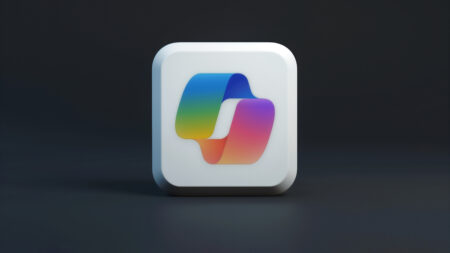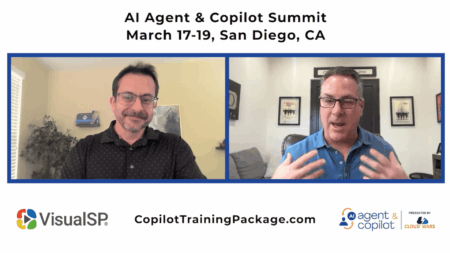One of the greatest fears in the workplace is that AI technology will eventually replace everyone’s job. However, a lot of these robots still struggle to perform many different tasks, which is why most people should not worry about AI technology taking their job overnight.
However, automation has become a more popular trend in various workplaces, as it can help boost productivity and make the jobs of each employee easier. MIT recently conducted a daylong virtual conference that focused on AI and the future of work. Speakers were from various industries, such as academia, government, and corporate businesses. One theme remained consistent throughout the conference, as these experts believe that task automation will not replace human work. Instead, it will become a valuable partnership that will increase productivity and guide development. The only exception is that automation will continue to replace middle-skilled manufacturing jobs. All of the speakers agreed that using AI technology provides a great opportunity to further improve productivity and enhance the well-being of employees.
MIT’s Task Force on the “Work of the Future” organized the daylong event, as science and industry leaders discussed the social and technical impact of these changes in the workplace.
Professor Daniela Rus was one of the speakers at the conference, as she emphasized that today’s industrial applications of AI technology are relatively narrow. The current AI system is more focused on specialized intelligence to solve a specific or limited number of problems. Artificial intelligence has boosted efficiency for various tasks, such as in the insurance and health care industry. Generally, AI technology hasn’t displaced human workers. Fully automated systems, such as driverless cars, will not be widely available until many years in the future.
While the use of artificial intelligence remains gradual in most industries, multiple speakers highlighted that other tech advancements have become much more widespread due to COVID-19. Microsoft CEO Satya Nadella explained how video conferencing and other similar technology have made it possible to give important information without the need to be in the same location. An expert can transfer knowledge to another person on the front line from a remote location, which is especially important in combating COVID-19.
Nadella also discussed that many companies are getting accustomed to video conferencing, as they may not return to face-to-face interactions once the pandemic is over. Ultimately, this can result in significant structural change, as more people will begin to weigh the benefits of using technology to communicate instead of always meeting in person. Workplaces will need to adjust to this changing environment, as fostering social cohesion among each worker is important due to the lack of casual in-person interactions.
Some speakers also pointed out that automation technology has impacted some industries more than others. For example, some of the middle-skill manufacturing jobs have been lost due to the rise of automation. However, these losses aren’t inevitable as a careful deployment of automation technology can assist humans in the workplace instead of replacing people. Bosch CEO Volkmar Denner believes that businesses can focus on ways to assist employees in completing various tasks without attempting to replace workers. This type of automation improves efficiency in the workplace while still allowing humans to work without the fear of losing their job.
Finding a balance between the economic and social aspects of automation is key in allowing workers to earn a living. Technology should always be designed to serve human beings instead of us serving technology. Many other industry leaders also agreed with Denner.
Jeanne Magoulick is the engineering manager for Ford Motor Company. Her team is developing artificial intelligence that focuses on predictive maintenance for machinery. This technology will notify workers of potential problems with a machine before it breaks down. Predictive maintenance is a great way to maximize efficiency and reduce the amount of downtime in the workplace.
Daniela Rus also discussed the use of machines to safeguard human workers to ensure they are performing at their best without sacrificing safety. She cited a recent study where radiologists and an AI algorithm were separately shown pictures of lymph node cells to determine if they were cancerous or benign. The error rate for humans’ was 7.5%, while the error rate for the AI algorithm was 3.5%. However, the error rate for an image scanned by a computer and a human was only 0.5%, as linking these together maximizes efficiency and greatly reduces the chance of a mistake.
Julie Shah is an MIT associate professor for the Department of Aeronautics and Astronautics. She believes that the combination of using humans and automation can benefit many different domains, such as manufacturing systems and self-driving cars.
Satya Nadella also envisioned that automation would allow humans to design and program robots and computers without the need for specialized training. He highlighted various examples, such as spreadsheets and word processing programs that use automation to significantly increase productivity without forcing users to learn complex codes.
Automation technology can fundamentally change the workplace, where an untrained person can eventually become an app developer or a data scientist without the need for special training.
Daron Acemoglu is an MIT professor of economics that believes that technology is not an inevitable force in the workplace. Instead, technology is shaped by humans. Ultimately, policymakers and managers will need to decide how automation best fits into today’s work environment. There is no ironclad rule for what humans or technology cannot do, as it depends on our values and how we use technology to best meet our needs in the workplace.






